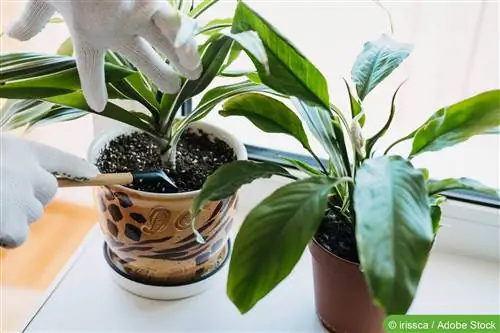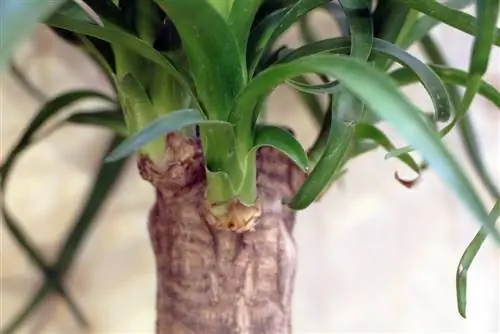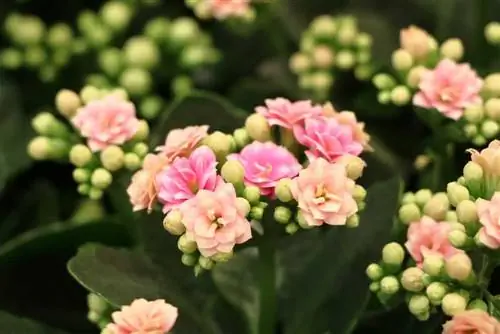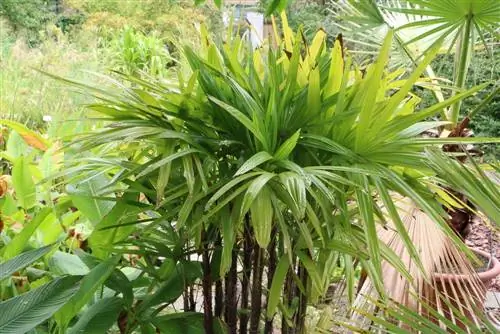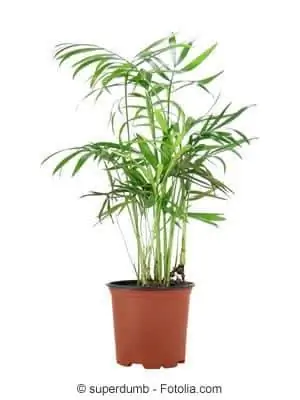- Author admin [email protected].
- Public 2023-12-17 03:39.
- Last modified 2025-01-24 12:45.
Observe rest time. Do not fertilize cacti, succulents, orchids and all plants that are in hibernation and do not water them at all or water them extremely sparingly.
Do not spray, but ventilate regularly to prevent the spread of fungi and bacteria.
Important tips & tricks in January
Make it brighter. During the winter months, some plants lose their buds before they open. The cause is usually due to poor lighting conditions. It is better to place the plants in question in a brighter place.
Avoid drafts. In winter, houseplants suffer more from drafts than in the warm season, especially when outside temperatures are low. The cold air flow causes leaf and growth damage to some plants.
Important tips & tricks in February
A refreshing, lukewarm shower every now and then is good for your protégés. Then dry the damp leaves with a soft cloth.
The production of seeds costs the Ritterstern a lot of energy. Therefore, cut off spent stems at the base.
Now is the optimal time to repot. Clean used pots and only use fresh soil.
Before the start of the growth phase, cut back plants with long, sparsely leafy shoots. Pinching out the shoot tips promotes branching in young plants.
Spray cacti during hibernation with warm water at the end of the month.
Important tips & tricks in March
Cacti are now ending their winter rest. Occasional spraying with warm water accelerates this process and awakens the spirits. Start watering sparingly, but only fertilize when growth visibly begins.
As soon as the linden tree has faded, it can be cut back if necessary. Continue to water regularly and fertilize weekly.
When repotting cyclamen, make sure that the tuber is not covered with soil, otherwise there is a risk of rot.
Protect plants on sunny windows from the midday sun by shading them, otherwise they will get burnt spots.
Important tips & tricks in April
Plant cuttings and offshoots in nutrient-poor potting soil and initially water only moderately.
Has the radiant aralia now reached XXL size? Then you can cut the shoots back. As daylight increases it sprouts again.
For large plants that will not be repotted, carefully loosen the top layer of soil with a stick and replace it with fresh soil.
Spray cacti more often with warm water. This promotes new growth. Also water succulents more abundantly and fertilize them lightly.
Agaves can now move into their summer quarters on the terrace.
The spring sun can sometimes be quite strong. You should therefore definitely shade houseplants that are in the blazing sun, especially at midday. Basically, all you need is a piece of newspaper that you place protectively in front of the plants. It is better to temporarily place sensitive leafy plants in an east or west window.
Important tips & tricks in May
Passion flowers feel right at home in the fresh air and grow rapidly. Attach a climbing aid to the pot in good time.
If you repot coral moss, you can also divide the plants straight away. In small pots the sections grow bushier.
Give your indoor hops a sunny, airy outdoor spot. The bracts then become more vibrantly colored. Protect from the blazing midday sun.
Provide Ritterstern with flowering plant fertilizer once a week after flowering until August.
Sword fern is well suited as an hanging basket plant for the shaded balcony. Spray more often, it loves moist air.
Important tips & tricks in June
Indoor bamboo needs a lot of moisture even in summer. Spray more often and do not let the soil dry out. Fertilize once a month until August.
Most plants are in full growth. To stay fit, they receive regular nutrients. When watering, make sure that no excess water remains in the saucer.
After your protégés, who spend the summer outside, have slowly gotten used to the outside temperatures, hibiscus, bougainvilleas, cacti, myrtle, yucca and date palms are allowed into the sun.
Zimmerkalla goes through a rest period from the beginning of June to the end of July. Do not fertilize and keep the potting soil only moderately moist.
Every year at holiday time the same problem arises: Who will look after the plants during a long absence? If you can't find anyone who is enthusiastic about this task, simply resort to self-help. There are plenty of ways to make plants self-sufficient. The following method is simple but reliable: Place the plants in a waterproof tray, turn the supports over and place the pots on them. Thirsty and larger plants are lower, others are slightly higher. Fill the gaps with clay granules or soil and water thoroughly. In this way, your green protégés can survive for one to two weeks in a cool, bright place.
Important tips & tricks in July
Do not fertilize self-grown houseplant cuttings until they have grown into vigorous young plants and only with a low dosage. If you fertilize too early, the roots will be damaged by fertilizer s alts.
If the soil in the pots has completely dried out after the short vacation, repeated dipping in a bucket of water will revive the spirits of your green protégés.
Cut back ray aralia if the shoots are too long. Pruning encourages branching and ensures bushy growth.
Water indoor bamboo abundantly. He also has no objection to a foot bath.
Most houseplants, but especially cacti and succulents, are only fertilized until the end of the month.
Important tips & tricks in August
Cacti and succulents are gradually adjusting to the rest period. From now on, stop fertilizing and water less. Keep the Christmas cactus a little cooler until the first buds appear.
If necessary, you can repot strong plants. This gives your younglings enough time to form sufficient roots until winter.
Propagate tradescantias through cuttings when the tendrils become bare.
Fertilize the wreath loop one last time, place it in a cooler place and water moderately. Stop turning the pot when the first buds appear.
Houseplants in the summer resort now experience summer at its best: plenty of sun and high temperatures. It is inevitable that the potting soil will dry out quickly. If you don't want to be constantly ready with a watering can, you can use something that has already proven itself well in the garden. Covering bare soil with coarse compost, straw, chopped garden plants or well-seasoned chopped bark acts like an insulating layer. It protects the roots because the soil does not become bone dry and does not heat up as much. The only disadvantage: snails find it very comfortable under the layer of mulch.
Important tips & tricks in September
Potted plants in summer are now placed in a place protected from the rain so that the soil can dry out. Pour away water from planters and saucers. Put away in good time before the first night of frost.
In cold, humid weather, bring cacti and succulents into the house immediately. The rest period now begins for them. Stop fertilizing and water sparingly.
Tact is now the order of the day when watering the potted plants in the room. Dripping wet soil doesn't bother them at all in the unheated rooms, which are quite cool at night.
Prepare gloxinias for the rest period: water slowly and dry, overwinter at 15 degrees Celsius.
Poinsettia, cover the plants with black foil from the middle of the month. Poinsettias are short-day plants that only bloom if they are left completely dark for at least 14 hours a day for six to eight weeks. Instead of the foil you can also use a bucket or cardboard box.
Important tips & tricks in October
Do not fertilize houseplants from now on. Exception: all flowering potted plants
More economical and only water when necessary. Use room temperature, stale water.
Place cacti in a cool window and do not water or fertilize them. They need this rest so that they will bloom again next year.
Light-hungry plants can now move safely to the south window again.
Spray orchids more often, but do not wet the flowers.
Spring bloomers for flower pots, if you want to enjoy spring a little earlier, you should not forget to plant bulbs of tulips, daffodils, crocuses, bulbous irises or hyacinths as densely as possible in pots at the beginning of the month. But you are not allowed to touch each other. Pre-fertilized potting soil is best suited for this. Then water the pots thoroughly and place them in a dark, cool place for three months.
Important tips & tricks in November
Stop watering cacti. The most important prerequisite for flowering in cacti is that they have a longer winter break. Place your prickly roommates in a bright, cool place. Water little or not at all or spray for the next few weeks.
Care for the poinsettia. The popular seasonal plants value consistent soil moisture. The soil should never be dripping wet, but it should not dry out either, otherwise poinsettias will lose their leaves. This can also be the case due to strong temperature fluctuations after long periods of ventilation.
Extend flowering time. Do not cut off the dead stems of the butterfly orchid completely, but shorten them in half. Then new buds can form.
Important tips & tricks in December
All houseplants that overwinter in a cool place must not be too wet. The cooler the temperatures, the less watering occurs. Only water when the soil surface is dry.
Spray daily with lime-free, lukewarm water. For orchids, only the leaves, but not the flowers and buds, may be moistened.
Cacti that are now in hibernation need fresh air occasionally. But avoid drafts when opening the windows.
Houseplants that are now taking a break from growth are no longer fertilized. Exception: all winter bloomers. You get your nutrients as usual.

